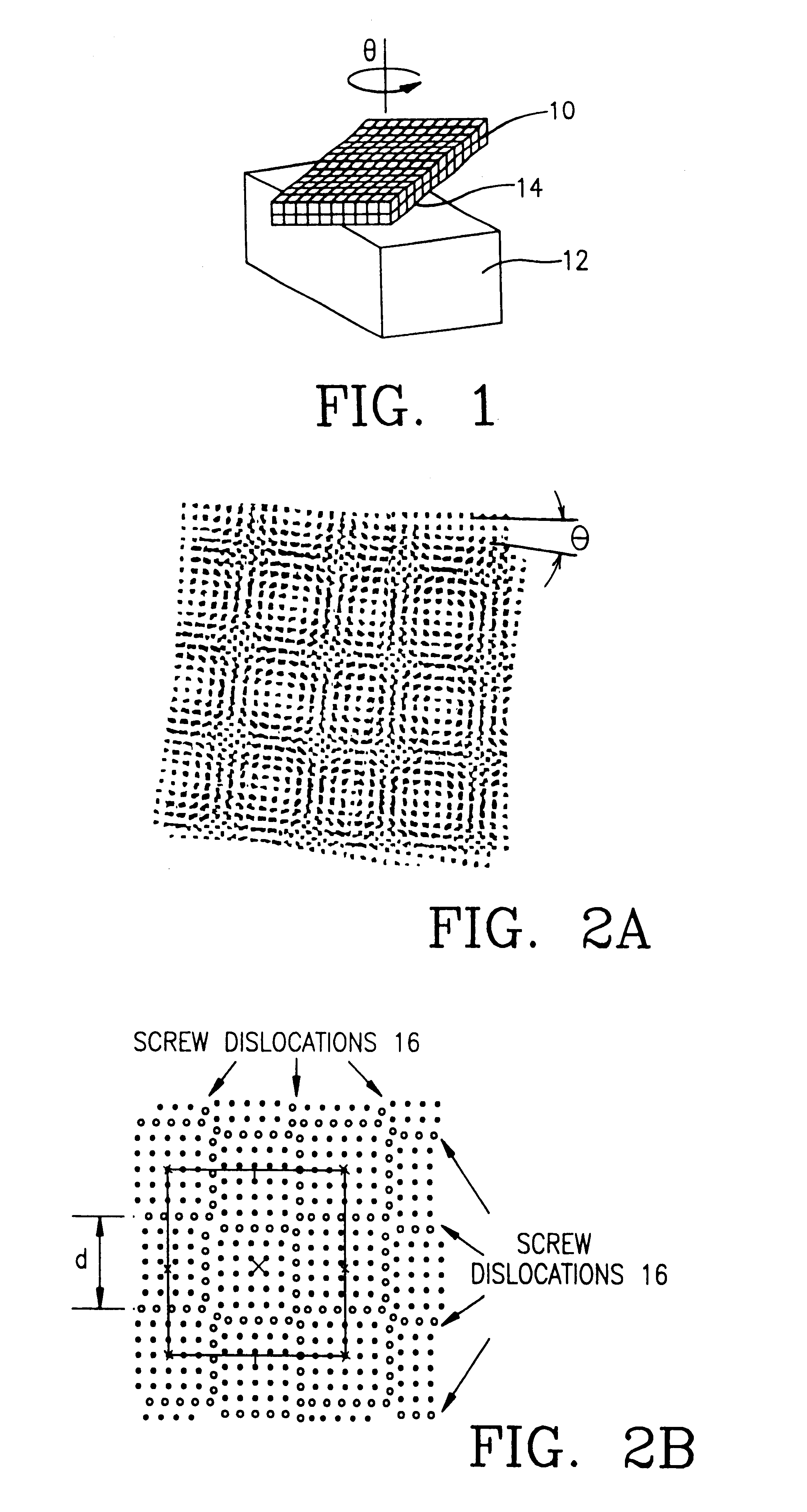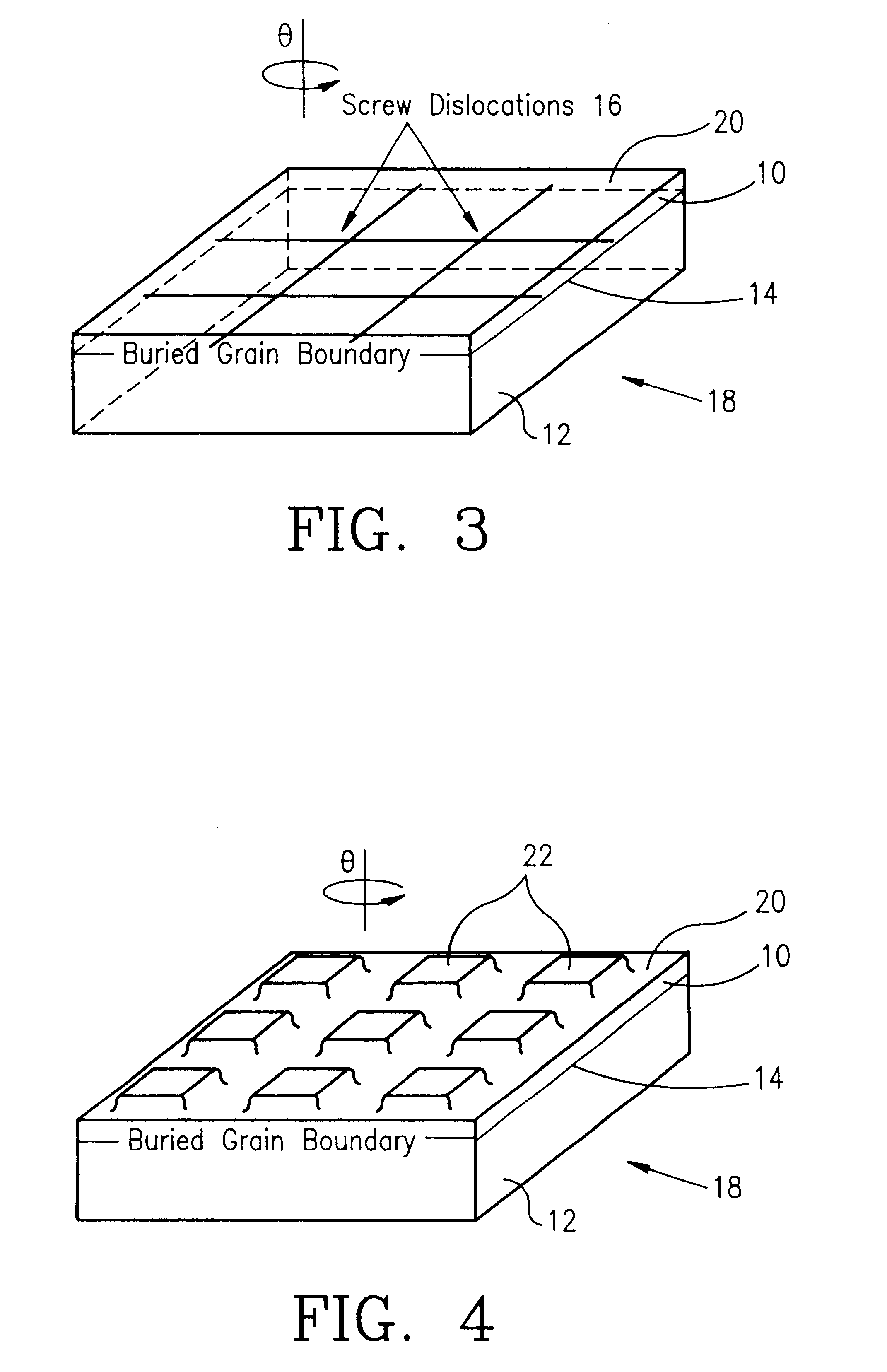Fabrication of periodic surface structures with nanometer-scale spacings
a technology of periodic surface structure and nanometer-scale spacing, which is applied in the field of fabricating patterned crystals having two dimensionally periodic surface structures, can solve the problems of difficult to produce dimensions on a length-scale of less than 100 nm using these techniques, and the significant amount of instrumental evolution that needs to take pla
- Summary
- Abstract
- Description
- Claims
- Application Information
AI Technical Summary
Problems solved by technology
Method used
Image
Examples
Embodiment Construction
Turning now to a more detailed consideration of a preferred embodiment of the present invention, FIG. 1 illustrates the geometry associated with the twist bonding of a first, thin (001) single crystal 10 to a second, bulk (001) single crystal 12 misoriented by an angle .theta. about a common normal with respect to one another, thereby creating a twist grain boundary 14 between the two crystals 10 and 12. A twist grain boundary is a grain boundary between two crystals that have the same surface normal and are rotated with respect to one another about this normal.
With reference to FIGS. 2A and 2B, when the two single crystals 10 and 12 are initially brought into contact, a misfit exists between the two lattices along the boundary plane if no structural relaxation occurs. FIG. 2A shows the Moire pattern created by the two planes of atoms immediately adjacent to the grain boundary with no relaxation. This configuration is a high-energy state due to the high distortion in the atomic bond...
PUM
| Property | Measurement | Unit |
|---|---|---|
| thickness | aaaaa | aaaaa |
| thickness | aaaaa | aaaaa |
| thickness | aaaaa | aaaaa |
Abstract
Description
Claims
Application Information
 Login to View More
Login to View More - R&D
- Intellectual Property
- Life Sciences
- Materials
- Tech Scout
- Unparalleled Data Quality
- Higher Quality Content
- 60% Fewer Hallucinations
Browse by: Latest US Patents, China's latest patents, Technical Efficacy Thesaurus, Application Domain, Technology Topic, Popular Technical Reports.
© 2025 PatSnap. All rights reserved.Legal|Privacy policy|Modern Slavery Act Transparency Statement|Sitemap|About US| Contact US: help@patsnap.com



